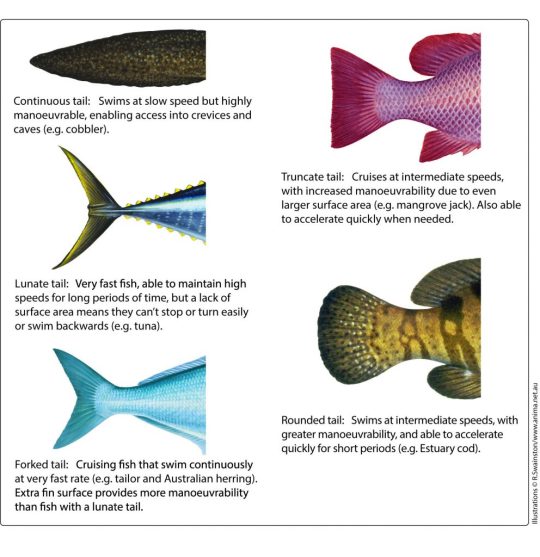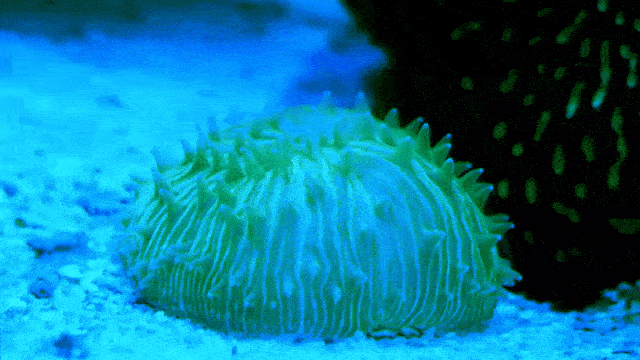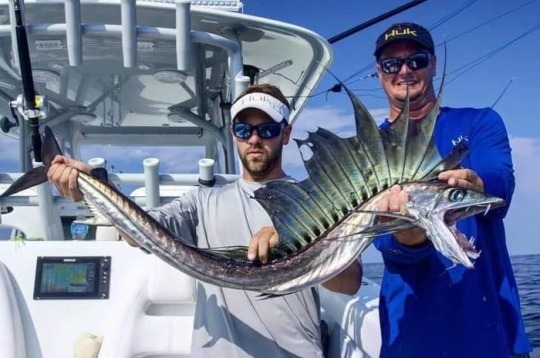#it's in zoology
Explore tagged Tumblr posts
Text
#such a good song#i also think it's awesome that the singer is a professor#he has a phd from cornell#CORNELL!#it's in zoology#such a nerd#and i love him#bad religion
5 notes
·
View notes
Text

One of the coolest things to remember is that because prey animals have eyes on the side of their head, they can still see in front of them but they are focused on something when in profile!
72K notes
·
View notes
Text
On April 16th 2025 the US federal government has proposed to change the interpretation of the endangered species act so that it no longer protects habitat.
This is open for public comment until the end of May 19th. Please comment and make your voice heard.
Wildlife need their habitat. If the ESA redefines harm so that habitat is no longer protected, the implications for wildlife would be catastrophic.
64K notes
·
View notes
Text

this image came to me in a dream
#here you go cathartes!#inaturalist#naturalist#nature#ecology#zoology#biology#wildlife#hawk tourism#they're called chickenhawks cuz they dont eat pork send post
53K notes
·
View notes
Text

The shape of a fish's caudal tail can tell you a lot about how fast the fish moves! A rounded tail is the slowest and a lunate tail is the fastest! The lunate tail has the most optimal ratio of high thrust and low draw, making it the fastest.
Ichthyology Notes 2/?
#marine biology#science#biology#wildlife#marine life#ocean#animals#marine ecology#animal facts#fun facts#fish#fishies#zoology#fish anatomy#anatomy#fish facts#ichthyology
47K notes
·
View notes
Text
I've seen posts going around claiming that petting animals is basically tricking them into thinking they're being groomed, and it's bugging me because, like, there's no trickery afoot. Petting and scritching are grooming activities. They help to dislodge loose fur and foreign objects and more evenly distribute protective oils, among other things. Primates are social groomers, and the human impulse to scritch is the legacy of our primate ancestors. We see an animal we like, even a dangerous one, and the monkey brain says "groom that thing".
73K notes
·
View notes
Text
A manatee rescue that I follow responded to a call about a female manatee with two calves because one of her babies had been injured by a boat strike. The entire family was temporarily relocated from the wild into a wildlife rehab facility for the injured male calf to undergo treatment. While there, vets noted the female calf was significantly larger than the little injured male. They did genetic testing and determined that big sister calf actually wasn’t related to the other two manatees at all! She was in fact an orphan calf that the adult manatee had found and taken in to care for right alongside her own little one.
Wild to think this manatee calf was literally adopted and nobody would have ever known if it weren’t for random coincidence and human curiosity. Every animal that you cross paths with in life has a fascinating personal story that you’ll only ever catch a glimpse of (and that’s if you’re lucky).
34K notes
·
View notes
Text
breaking news: (wait for it)

"walking" coral discovered!

ohh...look at it go...
#coral#coral reef#gif#ocean#animals#plants#purple#green#blue#aquatic#sea creatures#sea life#sea#water#waves#zoology#botany#ecology#environment#biology
12K notes
·
View notes
Text
The Lancetfish is a species that looks like it comes straight out of a realistic fantasy world building project.

#speculative biology#speculative ecology#speculative evolution#speculative zoology#traditional art#traditional sketch#spectember#specposium#paleontology#fanart#paleo meme#paleo art#paleontologist#paleostream#paleobird#paleomedia#paleoblr#paleoillustration#paleoart#worldbuilding#world#fishing#world building#fantasy#realistic fantasy#fish#lancet fish#lancetfish
71K notes
·
View notes
Text

#ecology#naturecore#nature#zoology#animals#alligator#reptile#animal photography#nature photography#cute animals#cute
10K notes
·
View notes
Text

Here's a big project I've been working on for a few weeks: a phylogenetic tree of everything in Minecraft! It would take ages to explain everything here, so if you want an explaination of any inclusions, exclusions, categorisations or Latin names PLEASE PLEASE PUHLEASE ask me I would love to answer any questions :3
Here's the slides I used to make it since i'm aware the text on the image there is pretty much unreadable.
Reblogs appreciated!
Edit: there are some problems with the image on here aside from the quality, so please check the slides for a slightly more accurate version! Also, if you have a question check the notes first! Odds are someone else has asked already.
Edit 2: PLEASE check the reblogs before you ask a question, most of the questions I'm getting now are ones that have already been answered. But I of course really appreciate how much people care :3
Full image description:
At the bottom is the Origin of Life, which branches out into five kingdoms - amoebozoa, animalia, fungi, algae and plantae.
Amoebozoa is in pink. It branches into Sculk (latin name sculk sculk) and then into slimes (scindo uliginosus) and magma cubes (scindo igneum)
Animalia starts off in orange. It branches off into the five types of coral (Fire - millepora, horn - rugosa, tube - tubipora musica, bubble - Plerogyra sinuosa, brain - diploria). The second branch of animalia branches off to the sponge (in the phylum demospongiae) and then to molluscs and arthropods.
Moluscs first branches off to the shulker (duopartes purpur) then to the nautilus (latin name nautilus), the ghast (Exspiravita inferno) the heart of the sea (unknown latin name), the squid (Immiforma caeruleum) and the glow squid (Immiforma crepuscula). The heart of the sea and nautilus are both marked with a dagger symbol, indicating they are extinct.
Arthropods branches off to the enderman (gracillis sapiens) and the ender dragon (draconiforma finis). It also branches off into insects, featuring bees (bombus enormus) and silverfish (Lepisma saccharinum), as well as to arachnids, featuring the endermite (terminus limina), the spider (rufoculos nocturnis) and the cave spider (rufoculos caverna).
Carrying on from the branch of animalia is the sea pickle (Pyrosoma) and then the vertebrates, which are coloured in reddish orange. The first branch contains the Queen angelfish (Holacanthus ciliaris), the emperor red snapper (Lutjanus sebae) and the moorish idol (Zanclus cornutus). the second branch contains salmon (Oncorhynchus nerka). The third branch contains the yellowtail parrotfish (Sparisoma rubripinne), the clownfish (Amphiprion percula) and the dottyback (Diadem pseudochromis). The next branch contains cod (Gadus). the final fish branch contains the triggerfish (Abalistes stellatus), the pufferfish (Arothron meleagris) and the yellow tang (Zebrasoma flavescens).
Next the branch transitions into tetrapods. coming off this are amphibians, which includes the frog (Lithobates thermochroma) and the axolotl (Ambystoma mexicanum)
image desc currently unfinished, would appreciate help
11K notes
·
View notes
Text

Black-crowned Night Heron (Nycticorax nycticorax) observation by eleggua
happy pride
#inaturalist#naturalist#nature#ecology#zoology#biology#wildlife#birds#bird#birdblr#birding#ornithology#birdwatching
8K notes
·
View notes
Text
You ever think about how weird hippos are ecologically speaking?
There's literally no other megafauna on earth that spends the entire day lounging around in water, mostly just socializing, only to come onto land to feed at night.
I remember when I used to do education programs on hippos, most people assumed they ate aquatic plants, and that that's the whole reason they were in water. Meanwhile, hippos are basically just giant nocturnal cows that eat only grass.

37K notes
·
View notes
Text
how it feels to be a zoologist when my friends send me a cute social media video with an animal in it that 100% should not be there

cute caracal! why is it in your house.
what a handsome alligator! why is it in a kiddie pool in a living room.
what a beautiful cobra! why is it being kept in a walmart $5 critter keeper.
such a beautiful fox! why is it in a two foot long metal crate.
wow! footage of an endangered species of insect! NO NO NO WHY ARE YOU TOUCHING IT
#oc#zoology#entomology#insects#arthropods#pets#arachnids#invertabrates#bugblr#animals#exotic pets#biology#conservation
5K notes
·
View notes
Text
Just in case anyone needs a reason to not feed wildlife- this story out of Washington is a pretty good reminder. This lady has been feeding raccoons for years and now she’s just had to call authorities for help because hundreds of them are parked out on her property and are so aggressive trying to get food that she can’t get into her house.


Neighbors have been reporting excessive raccoon mortality on the adjacent road and several attacks on pets, but still everyone on this video was just talking about how cute it is. Why can’t people see how unfair it is to disrupt an animal’s life like this? What do they think will happen to these raccoons? They should be scampering through a forest or marsh eating crayfish and berries and bugs, not hotdogs and cat food. This is a nightmare situation and it’s entirely one person’s fault.
12K notes
·
View notes